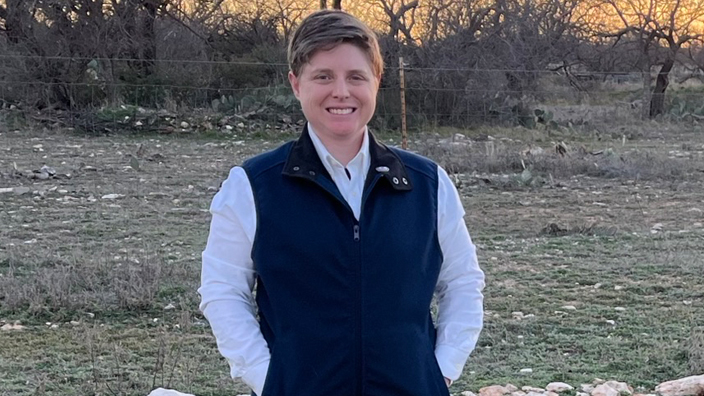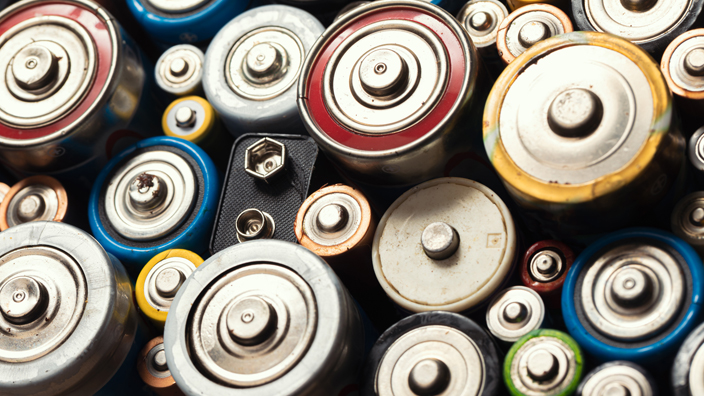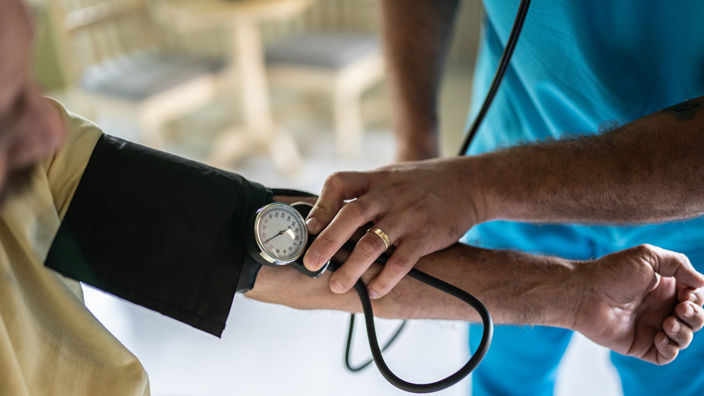
Reshaping the Postal Service
The PMG discussed the organization’s future during a recent speech
The Postal Service is making significant progress under the Delivering for America plan, Postmaster General Louis DeJoy told business leaders recently.
Before the organization began implementing the plan in 2021, USPS had lost focus, the result of a broken business model and an ineffective management strategy, he said.
Under Delivering for America, the organization is focused again and working to achieve financial stability while delivering excellent service.
“We’re all rowing in the same direction now,” DeJoy said.
He spoke at a conference in Washington, DC, organized by the National Association of Wholesaler-Distributors, one of the nation’s top trade associations. DeJoy was a keynote speaker at the event, which was centered around the theme “agents of change.”
The postmaster general discussed how he has leveraged his private-sector background to reshape and strengthen the Postal Service and improve its operating practices.
He highlighted investments in new technologies to improve the delivery of mail and packages, including new sorting machines and modern delivery vehicles, as well as network and transportation improvements to boost precision and efficiency.
DeJoy also discussed efforts to stabilize the USPS workforce, noting that during the recent holiday season, the organization only had to hire about 8,000 seasonal employees — a far cry from past years, when as many as 40,000 temporary workers were hired.
He said the Postal Service wants to build on its reputation as the nation’s most trusted government agency — but the work doesn’t end there.
“We want to be not just the most trusted organization, but the most used and preferred organization,” he said.

A burning passion to serve
This postmaster and volunteer firefighter always answers the call of duty
My name is Megan Beecher-Kennison and I’m the postmaster for Ozona, a small town in the Texas Hill Country.
Since 2022, I’ve also been a volunteer firefighter for the community of Carlsbad, TX.
A lot of volunteer fire work is trial by fire — no pun intended. There is training on weekends, but mostly you learn as you go from your superiors.
I might be called out overnight and need to respond on a second’s notice. I’ve seen action and I’ve put out flames.
My volunteer work and my work as a postmaster have a lot in common, especially in the sense that you have to take the time for people — no matter how busy or stressful a situation.
Being there for people when they need someone the most is very rewarding.
Of course, there’s also the service aspect. I want my children — I have three sons — to learn the “service before self” mentality.
My family and I moved to Carlsbad a little over a year ago, and I wanted to be involved in something during my free time. Being both a postmaster and a volunteer firefighter would not be possible without the support of my wife, Stepheny, and the support of my sons, Nicholas, Zechariah and Jakolby.
I always thought of being a firefighter while I was growing up. I’m only 5 feet tall — I’m tiny — but I don’t feel small on the inside. I wanted to do big things, be a leader. Luckily, they don’t care about your size as a volunteer!
“Off the Clock,” a column on Postal Service employees and their after-hours pursuits, appears regularly in Link.

Here’s how USPS employees should deal with used batteries
It’s not as simple as tossing them in the trash
The Postal Service wants employees to follow the proper procedures for the handling, storage and disposal of used batteries.
Many used batteries contain hazardous components and cannot be tossed in the trash.
These batteries are typically regulated as universal waste and include dead batteries from mobile scanners, phones, laptops and other electronic equipment.
USPS facilities must recycle universal waste batteries — which include small nonalkaline dry-cell batteries and small sealed lead-acid batteries — using services provided by Cleanlites Recycling through eBuy Plus, the USPS online purchasing platform.
The USA Lamp and Ballast Recycling catalog, part of eBuyPlus, has more information.
Alkaline batteries are typically not regulated as universal waste, except in California, where they must be recycled through Cleanlites.
Employees should arrange for car and truck batteries to be picked up for recycling through their facility’s vehicle battery supplier. Recycling of industrial lead-acid batteries should be arranged through EnerSys.
Used batteries should never be sent to the Atlanta Mail Recovery Center; the Ybor City, FL, Processing and Distribution Center; or the Topeka, KS, Material Distribution Center.
The Environmental Affairs and Corporate Sustainability Blue page has more information. Facility managers should consult their environmental specialist on state-specific universal waste regulation.

How much do you know about atrial fibrillation?
The condition causes 1 in 7 strokes
The USPS Benefits and Wellness team wants employees to know about atrial fibrillation, the most common type of heart arrhythmia.
It is caused by an irregular heartbeat in the upper chambers of the heart, also known as the atria. This does not allow blood to flow adequately to the lower chambers, or the ventricles.
When atrial fibrillation occurs, the upper and lower chambers do not work together as they should. The lower chambers do not pump enough blood to the lungs and body, and sometimes cause the heart to beat much faster than normal.
The condition increases the risk of stroke because blood may pool in the heart and clots can form. According to the Centers for Disease Control and Prevention, about 1 in 7 strokes are caused by atrial fibrillation.
Your risk can increase with age. Health conditions such as high blood pressure, heart disease, diabetes, obesity, thyroid problems, moderate to heavy alcohol consumption, smoking and chronic kidney disease also raise your risk.
People with atrial fibrillation may experience one or more of the following symptoms:
• Irregular heartbeat;
• Heart palpitations;
• Lightheadedness;
• Extreme fatigue;
• Shortness of breath; and
• Chest pain.
Anyone experiencing these symptoms should consult a doctor.
The Centers for Disease Control and Prevention website has more information on the condition.
Have spent printer cartridges? Here’s how to recycle them
The Postal Service is reminding employees of its procedure to recycle inkjet and toner cartridges.
These items should be packed securely in a sturdy box, with a minimum of six items per shipment.
The boxes should weigh less than 70 pounds and not exceed 108 inches in length plus girth.
The boxes should be addressed to: Cartridge Return Center, 315 Weakly St., Calexico, CA 92231.
Labels can be created in the Click-N-Ship administrative shipment platform. Employees can request access through ARIS.
Ricoh toners and tubes cannot be sent to the Cartridge Return Center.
WestPac Area, New York 2 District on top in scanning
A snapshot of Postal Service scanning data shows the national rating was 96.59 percent during the week ending Feb. 16, down 0.10 percent from one week earlier.
The data was collected Feb. 21.
WestPac led the four areas with a rating of 97.02 percent, while Southern ranked last with a 95.91 percent rating.
Among the 50 districts, New York 2, part of Atlantic Area, ranked first with a 97.87 percent rating, while South Carolina, part of Southern Area, ranked last with a 91.71 percent rating.
Scanning data allows customers to track their mail and packages, which helps USPS deliver excellent service, boost loyalty and drive revenue.
To see the latest data, go to the Informed Visibility website and select “Customer Experience,” followed by “DES 2 Scan Performance.” Postal Service employees must request Informed Visibility access through eAccess.
View past printouts
Printout details
What's included
-

Reshaping the Postal Service
The PMG discussed the organization’s future during a recent speech
-
 Off the Clock
Off the ClockA burning passion to serve
This postmaster and volunteer firefighter always answers the call of duty
-

Here’s how USPS employees should deal with used batteries
-

How much do you know about atrial fibrillation?
-
Brief
Have spent printer cartridges? Here’s how to recycle them
-
Brief
WestPac Area, New York 2 District on top in scanning